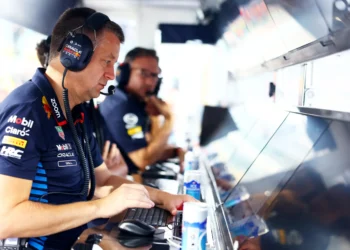The FIA’s recent decision to eliminate hybrid technology from World Rally Championship (WRC) Rally1 cars starting in 2025 has sparked a mixed reaction among drivers. The move marks a significant departure from the hybrid regulations introduced in 2022, which were intended to modernize the sport and attract manufacturers. Drivers have expressed a range of views, from disappointment over abandoning innovation to optimism about the potential benefits for teams and younger competitors.
Support for the Change: Cutting Costs and Reducing Complexity
Andreas Mikkelsen, a vocal supporter of the change, argued that hybrid systems caused more problems than they solved.
“We should have hybrids, but they should work all the time. Right now, it’s a huge expense, and it’s bad for the sport when issues dominate the headlines,” he said.
Mikkelsen’s experience with hybrid systems in Hyundai’s i20 N Rally1 highlighted their inconsistency and the negative impact on the WRC’s image.
Similarly, Takamoto Katsuta acknowledged the potential benefits of the decision. He suggested that removing hybrids could lower costs, making it easier for young drivers to enter the sport’s top tier.
“If this helps budget-wise and creates more opportunities for other drivers, then it’s definitely better,” he said.
Criticism: A Missed Opportunity for Innovation
On the other hand, several drivers lamented the decision as a step backward for the WRC.
Eight-time world champion Sébastien Ogier criticized the move as shortsighted:
“Stopping in the middle of a plan is never good for the sport’s image. We need innovation to attract manufacturers and align with the direction the world is heading,” Ogier emphasized.
He highlighted the importance of showcasing cutting-edge technology in rallying, suggesting that the WRC missed an opportunity to lead in areas like sustainable tires or advanced hybrid systems.
Adrien Fourmaux echoed Ogier’s sentiments, pointing out that hybrid technology remains relevant to manufacturers. He argued that despite frustrations when systems failed, drivers enjoyed the added power hybrids provided:
“Most cars sold today are hybrids, even Ferraris. It was good to have this technology in the sport.”
A Practical Shift: Balancing Performance and Simplicity
The FIA plans to counterbalance the removal of hybrids by reducing Rally1 car weight from 1260 kg to 1180 kg and trimming the air restrictor from 36 to 35mm. These changes aim to maintain a similar power-to-weight ratio, ensuring competitive performance.
2019 world champion Ott Tänak, while not deeply engaged in the debate, noted that consistency could benefit the sport:
“If it makes things more consistent for the next two years, that’s a good thing.”
Elfyn Evans acknowledged the surprise nature of the decision but expressed confidence in the revised regulations:
“With the weight reduction, the cars will still perform pretty well. It should be OK.”
Looking Ahead: Opportunities and Challenges
For drivers like Sami Pajari, who will join Rally1 full-time in 2025, the removal of hybrids presents both challenges and opportunities.
“The hybrid gave a lot of power and made the car amazing to drive, but I guess it can still be quick without it,” Pajari remarked.
The decision also reflects broader issues within the WRC, including the need to balance technological innovation with cost management and reliability. While some see the removal of hybrids as a pragmatic move, others view it as a missed chance to position the WRC as a leader in automotive innovation.
Conclusion: A Divided Future for Rallying
The removal of hybrid systems from Rally1 cars underscores the WRC’s ongoing struggle to reconcile technological advancements with practical considerations. While some drivers welcome the change as a way to simplify the sport and attract new talent, others fear it undermines the WRC’s relevance in a world increasingly focused on sustainability and innovation.
As the WRC navigates this transitional phase, the success of the revised regulations will depend on how well the championship adapts to these challenges while maintaining its competitive edge and appeal to manufacturers.










